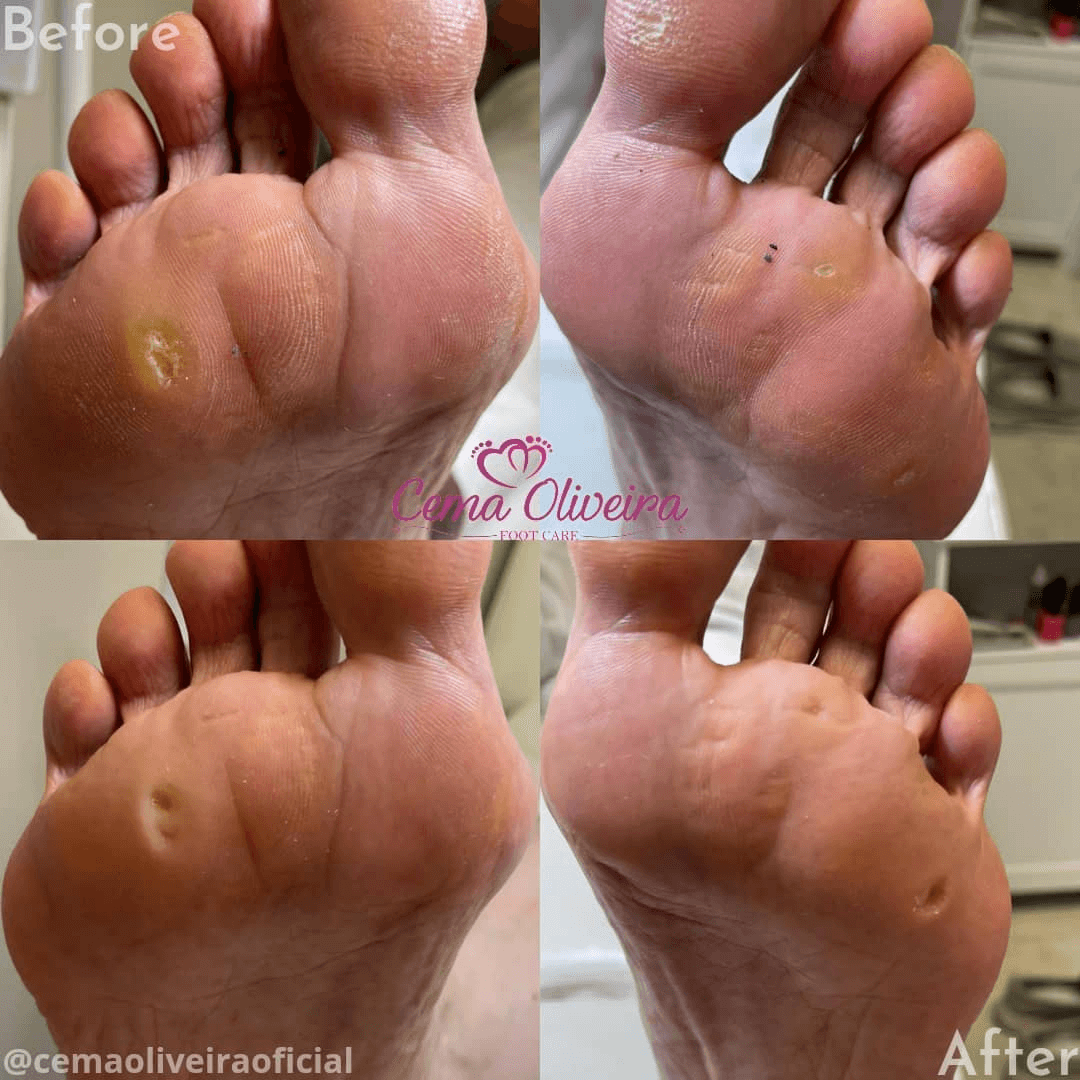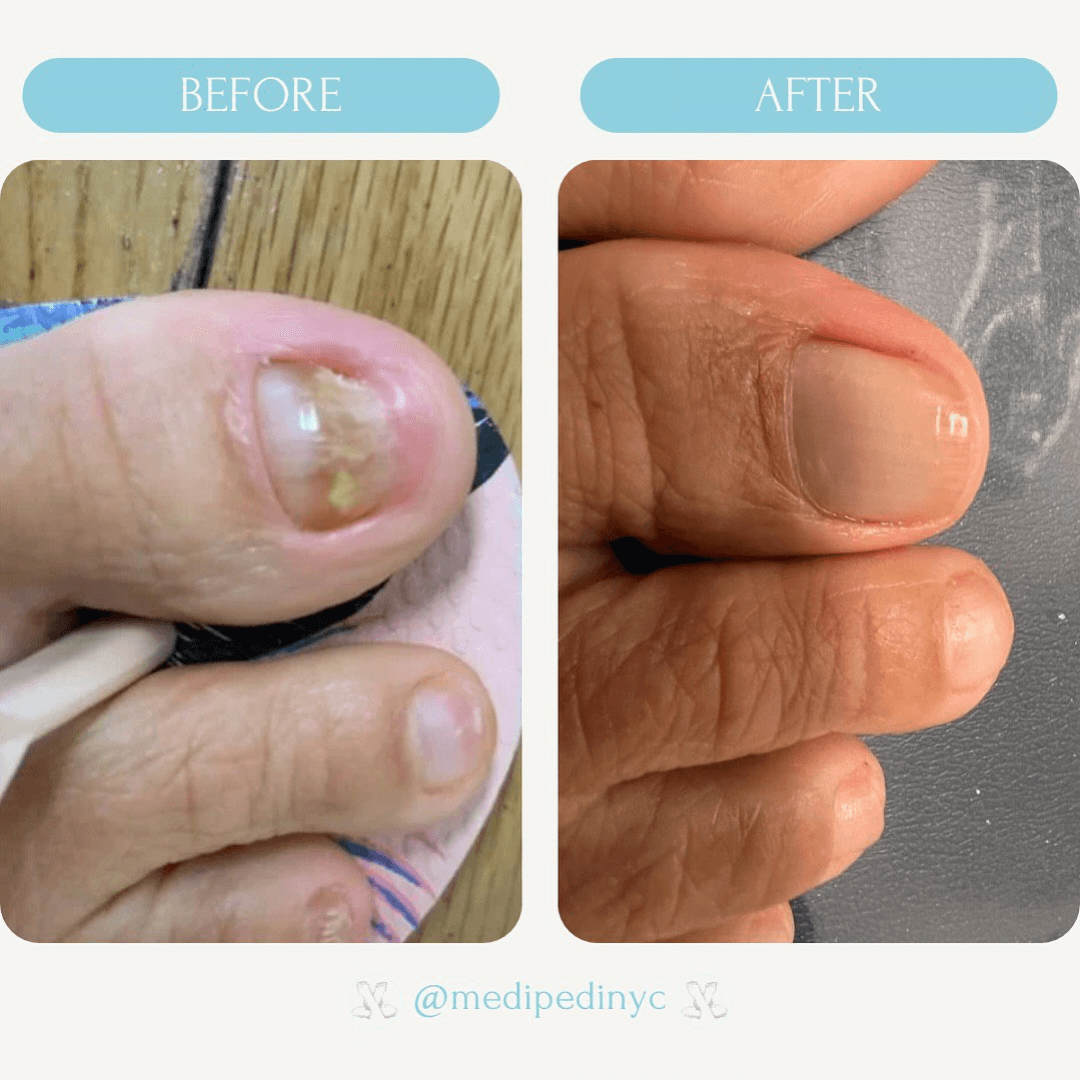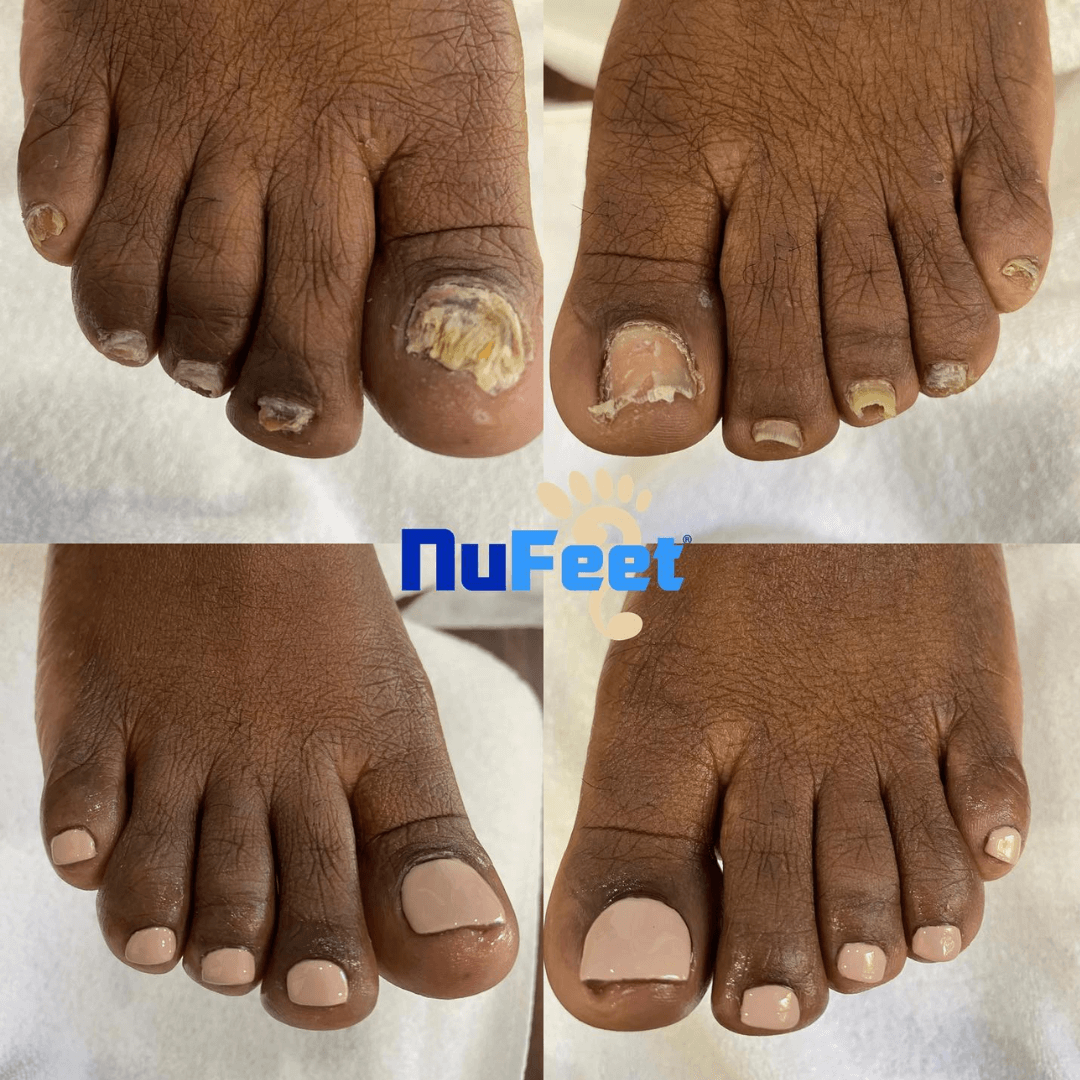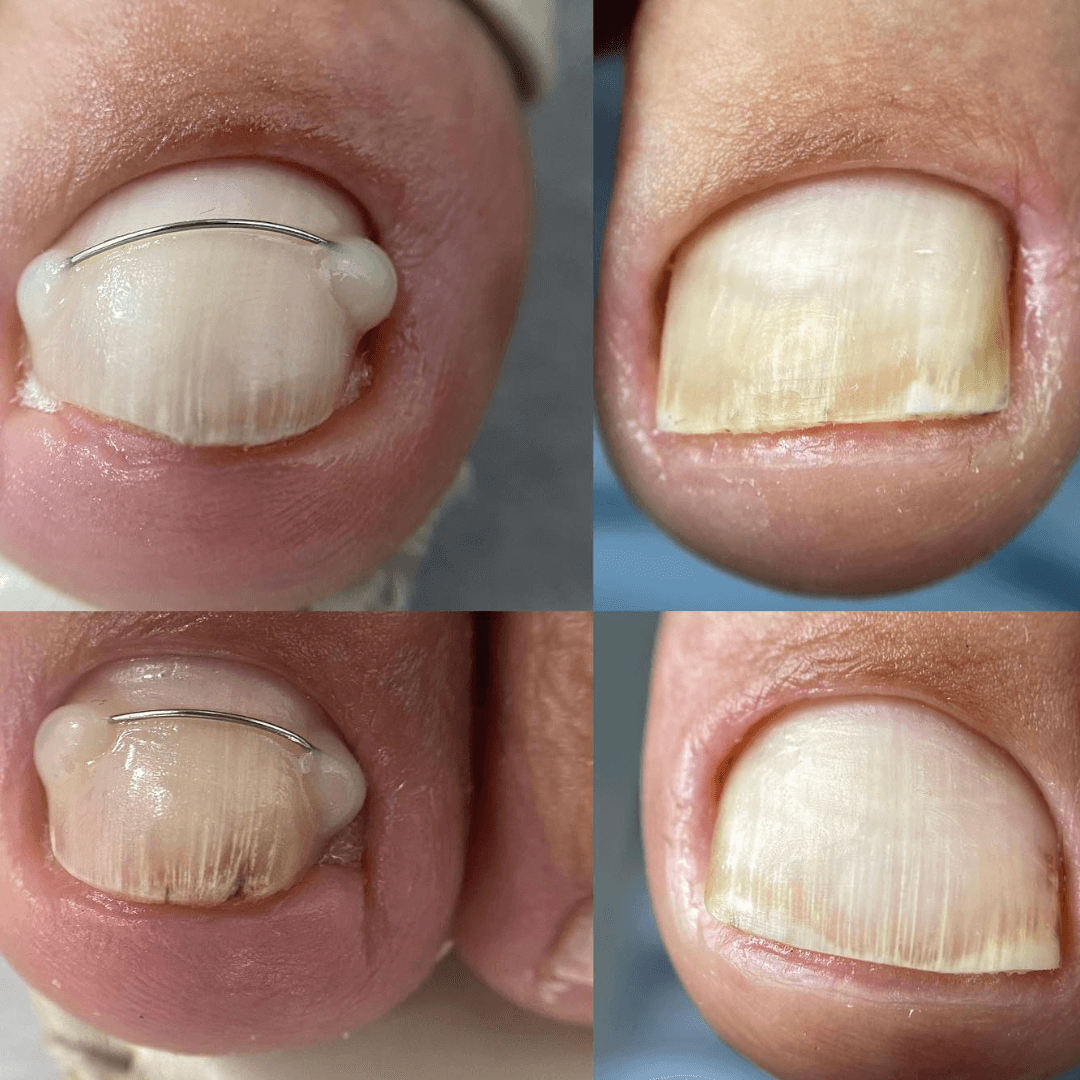Your Guide to Medical Pedicures in 2024
Posted on Jul 3, 2024

A podological pedicure, also known as a medical pedicure, medi pedi or therapeutic pedicure, is a foot care treatment that’s focused on health and hygiene. When properly performed by a qualified specialist, a podological pedicure can prevent many foot-related health issues such as ingrown toenails, cracked heels, and calluses.
Podological Pedicure: What Is It?
A podological pedicure is a type of pedicure that focuses on foot health. Unlike a traditional pedicure, which is done to improve the appearance of your feet, a medical pedicure is performed to prevent or treat conditions and diseases.
While you can get a regular pedicure at any nail salon, these treatments are performed by a podologist or a qualified nail technician with advanced knowledge of the medical aspects of foot care.
Podological pedicures are especially recommended for people suffering from various foot conditions such as ingrown toenails, viral warts, cracked heels, or nail fungus. This non-invasive treatment can also help prevent future foot health problems through regular and professional care.

View on Instagram
How Does a Podological Pedicure Differ from a Classic Pedicure?
The main differences between a podological pedicure and a cosmetic pedicure include the level of technician training, the treatment’s goal, and the tools and techniques used. This is a medical grade pedicure performed by an experienced podiatrist, so it won’t be the same as the salon pedicure that many people are used to- they’ll help with any medical conditions you’re dealing with and focus on treatments that help prevent problems while giving things like corns, calluses or cracked skin a little more tlc.
Qualification Scope of a Podologist or Nail Technician
A therapeutic pedicure is performed by a podologist or a qualified nail technician with appropriate qualifications and certifications. This is a much higher level of training compared to regular manicurists, who only need to complete a basic course and pass an exam.

View on Instagram
Goal of the Therapeutic Pedicure
While a traditional cosmetic pedicure focuses mainly on aesthetics (although it will also make your feet feel good- who doesn’t love a bit of pampering), a podological pedicure differs because it’s primarily aimed at foot health. For example, in a podological pedicure, water baths, which can be a source of bacterial infections, are not used. The treatment focuses on the more medical aspects of foot care, such as nail and nail fold management, removal of dead skin, and the treatment and prevention of foot diseases like deformed toenails, athlete’s foot and fungal infections.
Note: Podlology and podiatry both deal with your feet, but at different levels. While many people are great candidates for a medical grade pedicure, there are some conditions that may require different treatments. Podologists provide foot care services that help relieve discomfort, while podiatrists offer more in-depth services that treat musculoskeletal pain, dermatological disorders, and toenail problems (including more invasive correction procedures for ingrown toenails).

View on Instagram
Tools and Techniques Used
The tools used for medical pedicures in podological clinics are more advanced than those used for mani pedis in traditional nail salons. Podology specialists perform highly sterile procedures to prevent infection or its spread. The tools used for nail and nail fold management are specially designed for therapeutic purposes, enhancing the safety and effectiveness of the treatment.
Podological Pedicure Step by Step
A basic podological procedure appointment begins with a thorough interview and foot assessment by a podologist or a qualified nail technician. The treatment is then customized to meet the patient’s individual needs. Here is a typical process of a medical pedicure:
- Foot Assessment – The podologist collects a detailed medical history from the patient and thoroughly examines the feet, identifying problems like ingrown toenails, cracked heels, calluses, corns, or viral warts (if you have any medical conditions like diabetes or any autoimmune diseases, make sure to mention these as they can impact your treatment plan).
- Foot Preparation – The feet are disinfected, old nail polish is removed, and they’re prepared for the procedure.
- Nail Trimming – Nails are trimmed, shaped, and polished. A professional technician ensures proper toenail cutting to prevent ingrowth. If you have thick nails because of an infection or nail fungus, they might address this before shaping or trimming them.
- Dead Skin Removal – Using specialized tools, dead skin is removed from the nail folds and exfoliation is performed on the soles of the feet to relieve discomfort and treat any health issues.
- Foot Treatment and Nail Care – As part of your medi pedi, the podologist may apply braces to ingrown nails, remove viral warts, use appropriate medicinal preparations, and provide foot care advice to help keep your feet in good condition, going forward.
- Recommendations – At the end of the medical pedicure appointment, the podologist gives the patient foot care recommendations, possibly suggests changes in footwear, and may refer the patient to a podiatrist for further treatment of more advanced conditions.

View on Instagram
Benefits of a Medical Pedicure
A therapeutic pedicure offers numerous benefits beyond those of a basic cosmetic pedicure:
- Knowledge of Foot Care – During your medi pedi appointment, the podologist advises you on home care, corrects mistakes, and recommends appropriate cosmetics and footwear.
- Infection Prevention – Podologists use sterile techniques and foot/ nail care procedures to prevent further infections.
- Specialized Tools and Techniques – The tools used for each service in podological clinics are more advanced than those in traditional nail salons.
- Safety – A medical pedicure focuses on safe nail trimming, removal of calluses and corns, and cuticle protection.
- Personalized Approach – Just like and medical procedure, a medi pedi treatment is tailored to your individual needs.
- Prevention of Future Foot Problems – The medical pedicure staff can detect early signs of foot issues and refer you to a podiatry specialist for appropriate treatment.
- Pain-Free – A medical pedicure should not be painful. The podologist uses gentle and effective techniques to ensure the patient’s comfort throughout the service. Of course, your comfort level will also depend on the condition of your skin and nails, i.e., the overall state of your feet.
How Much Does a Medical Pedicure Cost?
The cost of a standard medi pedi in the United States at around $200, but this can vary depending on your location, the specialist and facility. The cost also depends on the complexity of the procedure and its duration. Many specialists also offer add-ons like therapeutic massage, laser treatments, and reflexology.

View on Instagram
Where Can I Get a Medical Pedicure?
Most nail salons aren’t able to offer medi pedis, because of the specialized nature of the treatment and tools involved. Often, you’ll be able to book one at a med spa or with a podologist. The easiest way to find medical pedicure services in your area is by using Belliata. We can help you find and compare medi pedi services near you, read client reviews, and book your appointment online.
Recommendations
A podological pedicure is an excellent way to maintain healthy and beautiful feet. With a podologist’s specialized knowledge, high hygiene standards, and personalized approach, it’s the best choice for people with foot problems. If you care about your foot health, it’s worth getting at least a basic medical pedicure.
Citations
Nail anatomy
https://www.sciencedirect.com/science/
Finger nail plate shape and size for personal identification – a possible low technology method for the developing world - Preliminary report
https://www.ajol.info/index.php/ajhs/article/view/30795
Physics of nail conditions: why do ingrown nails always happen in the big toes?
https://iopscience.iop.org/article/

Tabio
Tabio is a writer with a focus on podiatry and foot care. Their passion lies in translating complex medical knowledge into clear, accessible articles. Tabio's expertise covers everything from at-home foot care routines to the latest advancements in podiatric treatments. When not writing, Tabio stays on top of healthy living trends, ensuring their readers receive well-rounded advice for maintaining overall foot health and well-being.